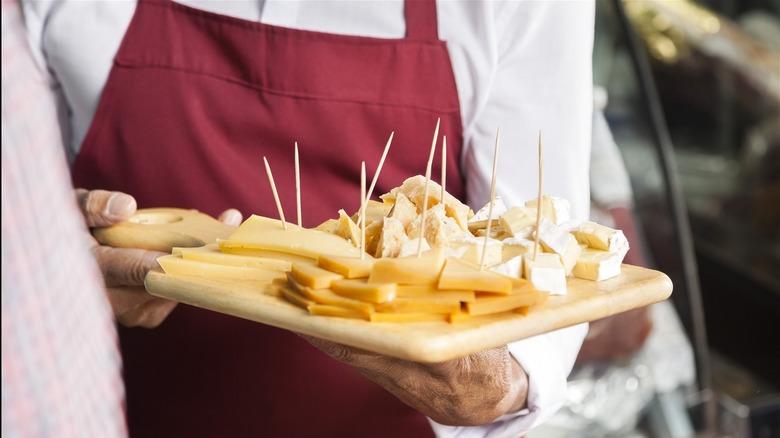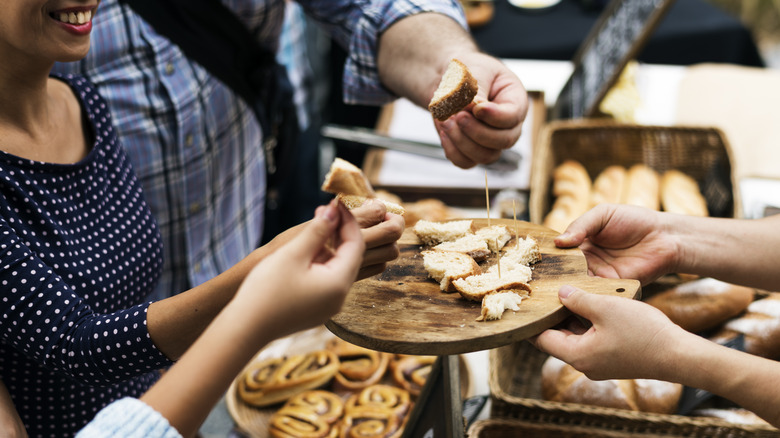The Unspoken Grocery Store Etiquette For Taking Free Samples
Free samples are one of the many pleasures of grocery shopping on the weekends. Wholesale retailers, like BJ's, Costco, and Sam's Club, recognize the effectiveness of this technique and utilize it to introduce products that are either a promotion or new to the market. Spotting those stainless steel carts at the end of the aisle sparks a thrill for hungry shoppers and causes them to take a brief pause in their outing.
However, there's the question of how many samples a person should take at a time. One might seem like the reasonable answer, as it ensures that there's plenty for others who might want a taste. The only issue is that a single bite might not be enough to determine whether you should follow through with a purchase.
Fortunately for the hungry shopper, Dan Pashman of The Sporkful blog and podcast says that getting two samples is the common store etiquette. Pashman told Southern California Public Radio's "Take Two" that getting two samples allows a potential customer to get the entire flavor profile. Pashman said, "From the standpoint of a food lover and relatively upstanding member of society, I think the limit is almost always two." As far as thirds, he suggests that you might come across as hungry.
Asking for additional samples is okay
As it turns out, most grocery stores won't turn you away when it comes to asking for another sample. A KENS-TV writer shared their experience getting samples at a Whole Foods in San Antonio. The staff were giving away samples of an organic coconut spread on slices of toasted French bread and encouraged the writer to take another taste. A worker said that people tend to assume that it's limited to one per customer, but they'd rather give the food away than waste the opened package. Likewise, Costco was a similar story when it came to free samples.
One of the ways that grocery chains reportedly benefit from samples is in increased sales. According to a study done by The Marketing Bulletin, samples led to increased sales of every product they measured (sometimes up to six times the usual purchase rate). One common theory for this is that samples help shoppers break out of just focusing on their grocery lists by reminding them of the variety of products available. So next time you see samples at your grocery store, don't think twice about getting a second helping.

